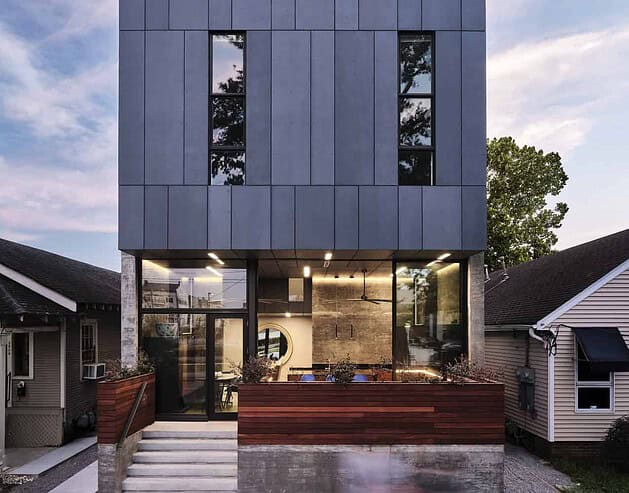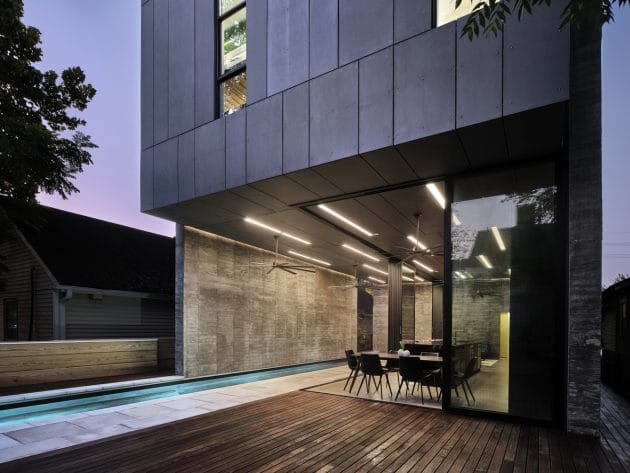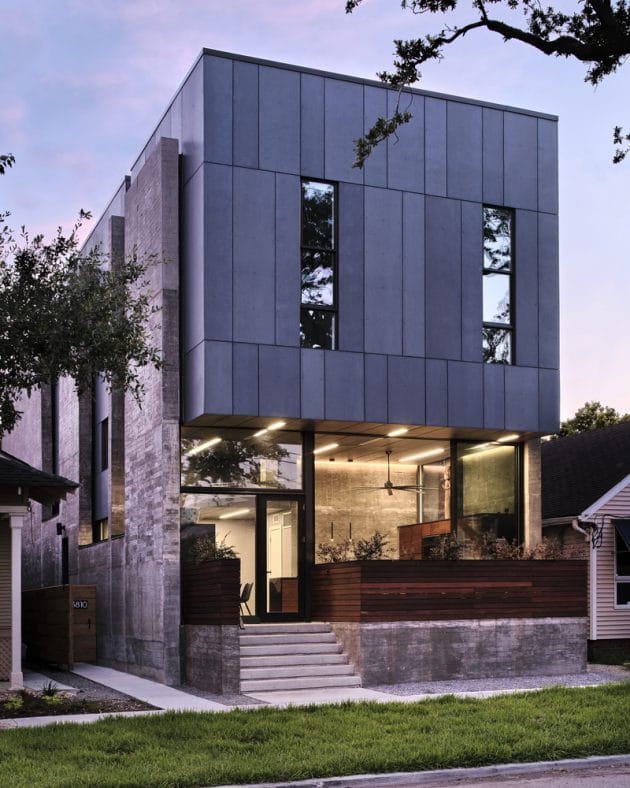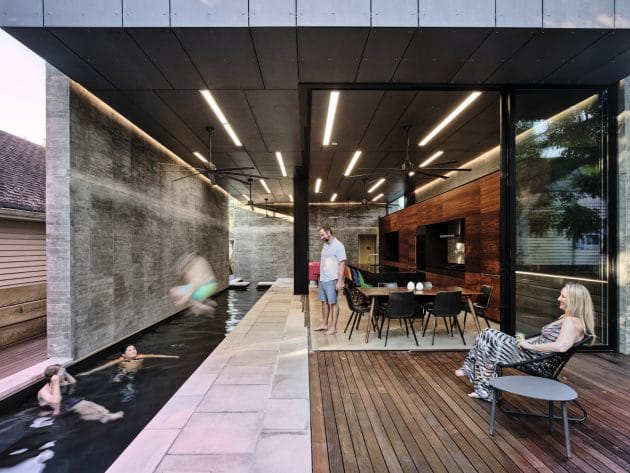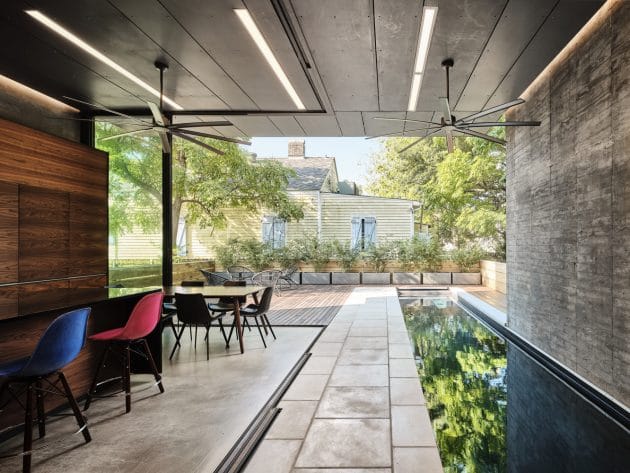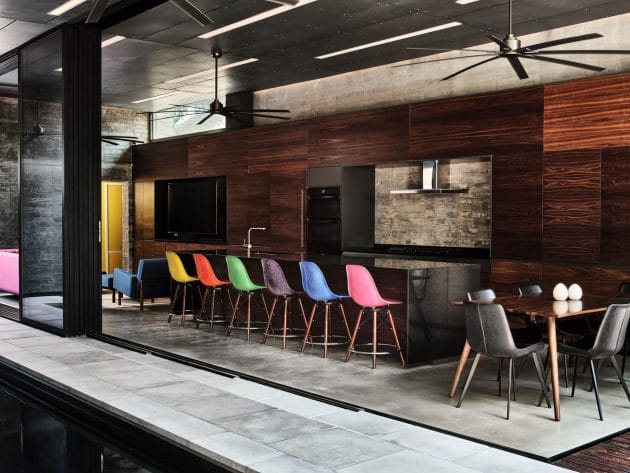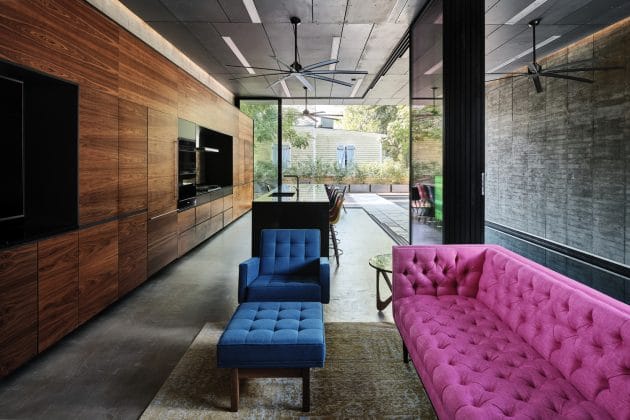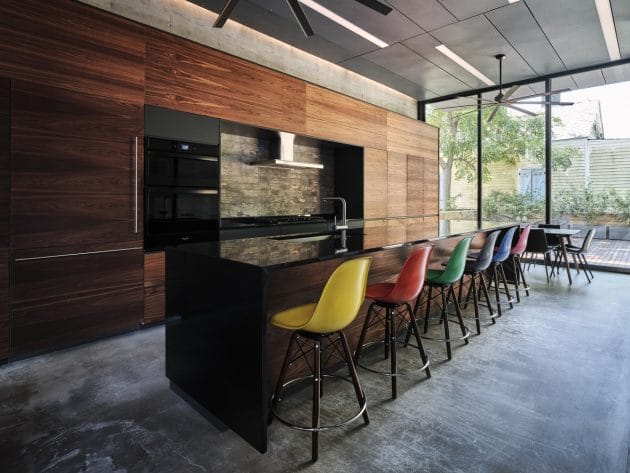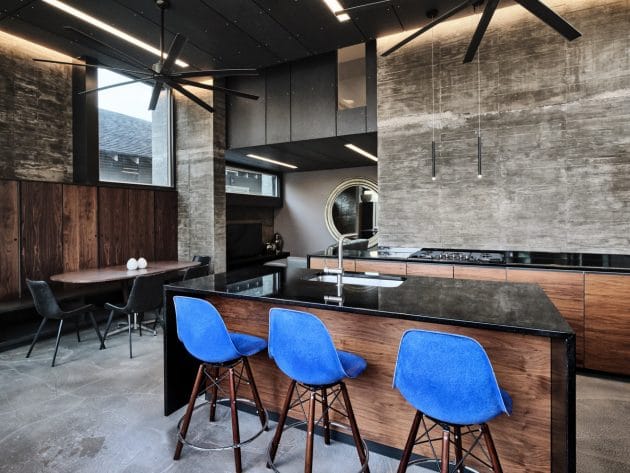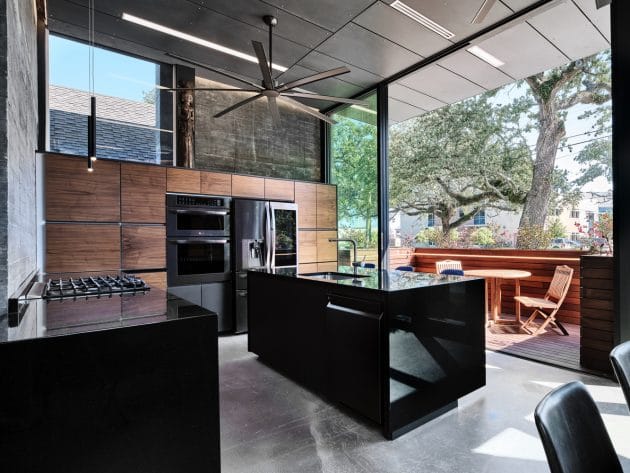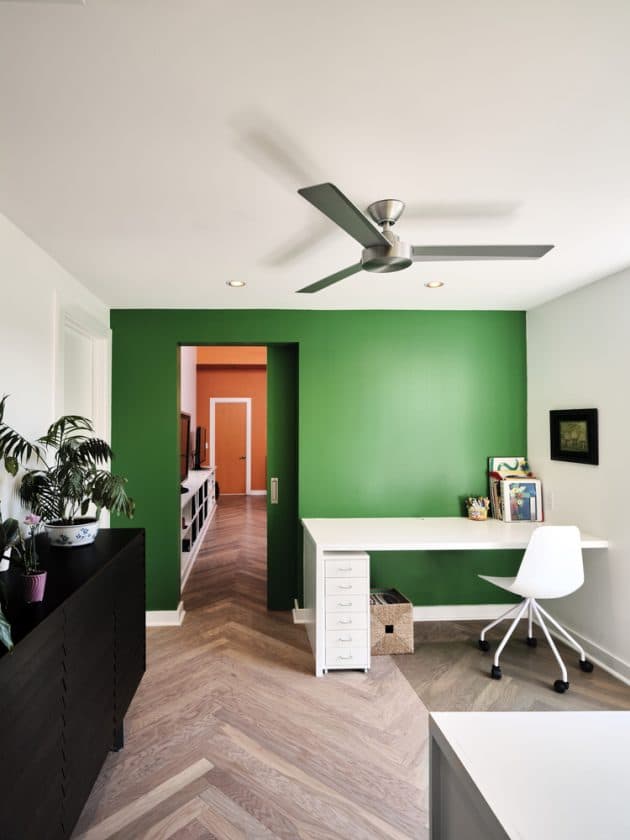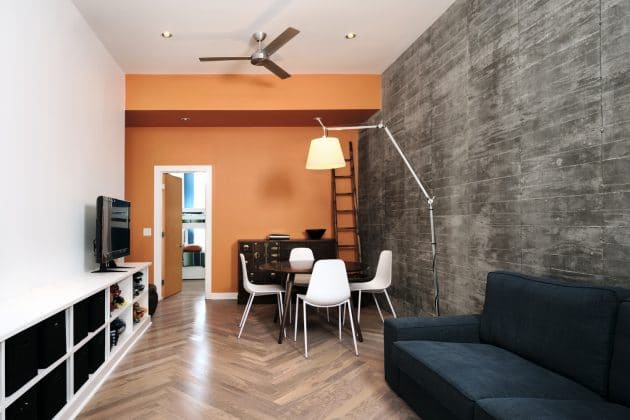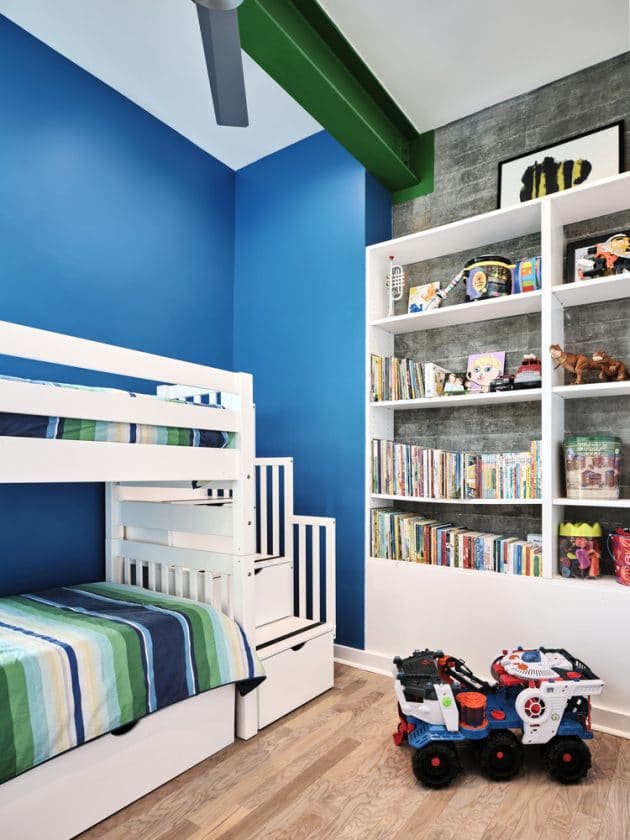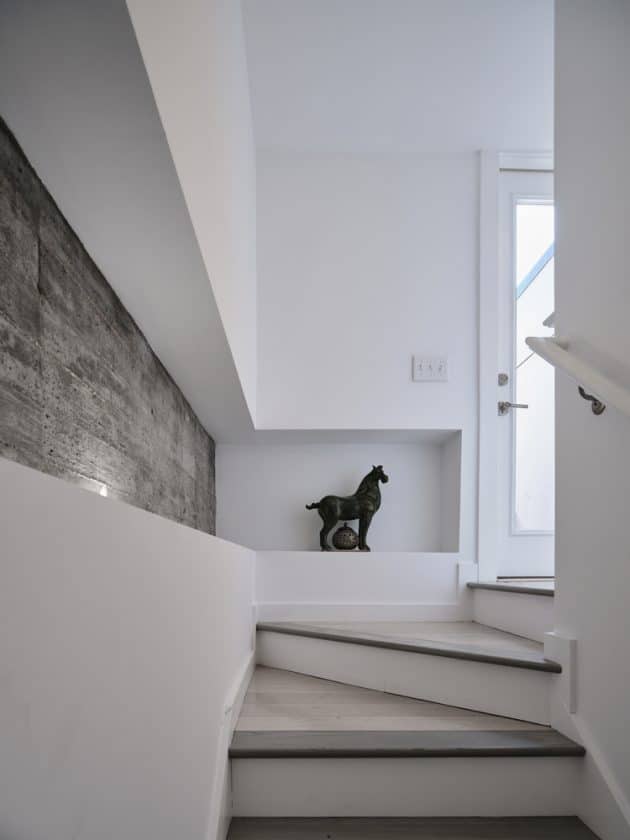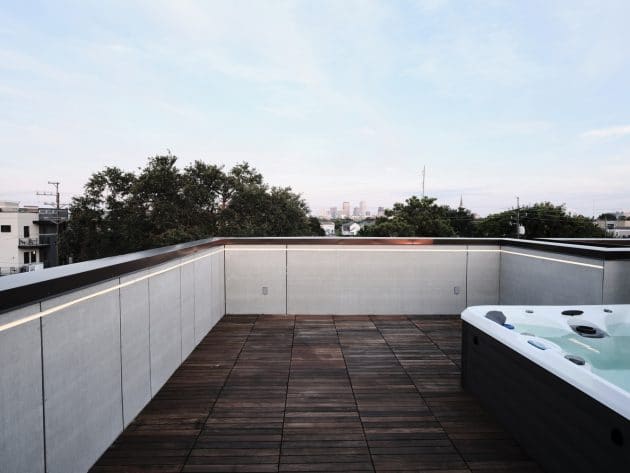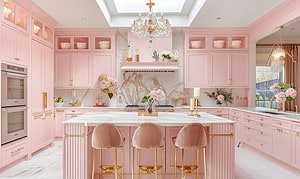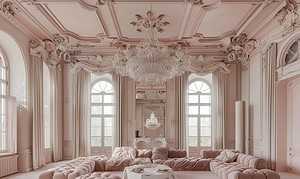Project: Bienville House
Architects: Nathan Fell Architecture
Location: New Orleans, Louisiana, USA
Area: 4,000 sf
Photographs by: Justin Cordova
Bienville House by Nathan Fell Architecture
Designed and completed by Nathan Fell Architecture, the Bienville House is the modern dwelling of a family that mostly works from home, meaning they spend a lot more time together a usual family. To combat psychological drag of the same people moving around all the time, the architects have managed to maximize the 4,000 square feet they had to work with. The result is a vibrant modern family home that flips the script of indoor home life.
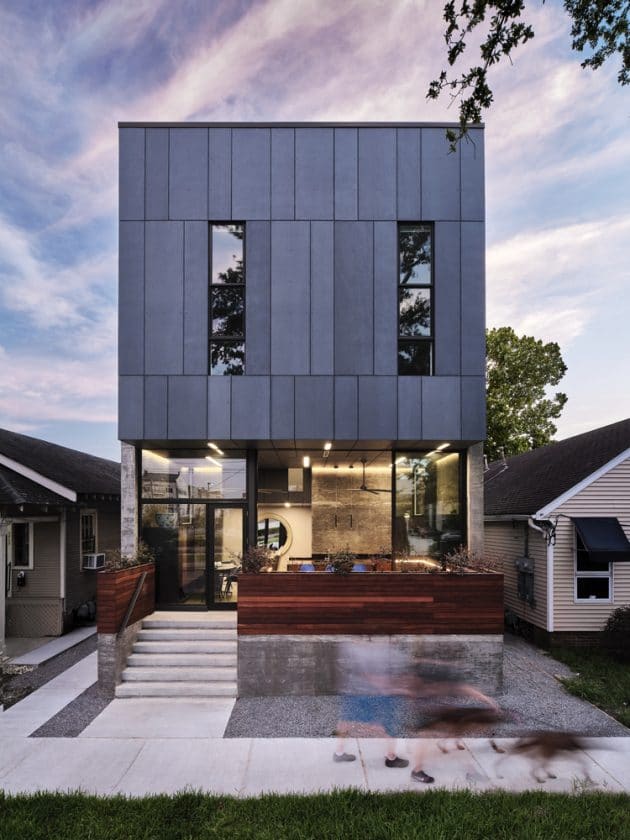
Logistics of a working family typically requires all (family members) to stay tethered to their homes for longer periods than each would prefer individually. This can become a psychological drag when all your time at school, work and home is spend indoors, as had been the case for a New Orleans Architect and his family. They reached a point where many families decide to move to the suburbs, exchanging great public parks and amenities for a back yard. Rather than moving far away, they decided to make a bold change by build a new house that flipped the script on indoor home life on a small urban lot. There was no way to afford the ongoing cost of a single-family home in the city, so a duplex with a rentable unit was baked into the concept early on.
The duplex is designed to maximize use of the lot (32’x105’) with suitable space for separate, large families (or groups of people) in each unit. The central goal of the design was to configure communal spaces in a way that best accesses outdoor light, air and volume despite the density of required spaces. The rear unit (primary residence) is 4 bedrooms with 3 ½ baths and the front unit (short-term rental) is 3 bedrooms 2 ½ baths. The layout orients the rental unit as its public face, actively engaging travelers with the city, while mirroring the position of the primary unit to connect with the rear yard for a greater amount of seclusion.
The 1st Floor spaces were designed to be voluminous with 12’ ceilings and compressed stairs to maximize the sf area of the communal spaces. In the rear unit, an exterior deck continues from the interior communal space over the entire rear yard and extends under part of the upper floor volume along with a raised pool. Two sliding glass walls open to enlarge both interior and exterior spaces. In the front unit, a sliding glass wall is also provided to create a grand aperture to the exterior and leads to a deck flanking the front sidewalk. A raised planter wraps the front deck and is tall enough to provide inhabitants inside with privacy but short enough for engagement with people walking by and visibility of the 1st floor interior.
Architectural forms are configured to accentuate the transparency between the interior spaces of the 1st floor and the exterior. The upper floors contain more private spaces (such as bedrooms) and are wrapped by exterior surfaces forming an echelon of suspended cubic forms legible from multiple viewpoints including the underside. The exterior cladding wraps horizontally as the 1st floor ceiling material as an artifice to convey the space below as “outside.” The walls supporting the cubic forms are a series of monolithic, exposed concrete walls with a narrow gap between the walls and the cubic form to render each (the wall and cubes) distinctly. The static forms juxtapose the more animated interior space as a frame, reinforcing the transparency.
